

Damion Smy
2026 Volkswagen Tayron review
1 Day Ago
Lexus has a long history of hybrids, but it's new to the plug-in hybrid world. The NX450h+ is a very strong first effort.
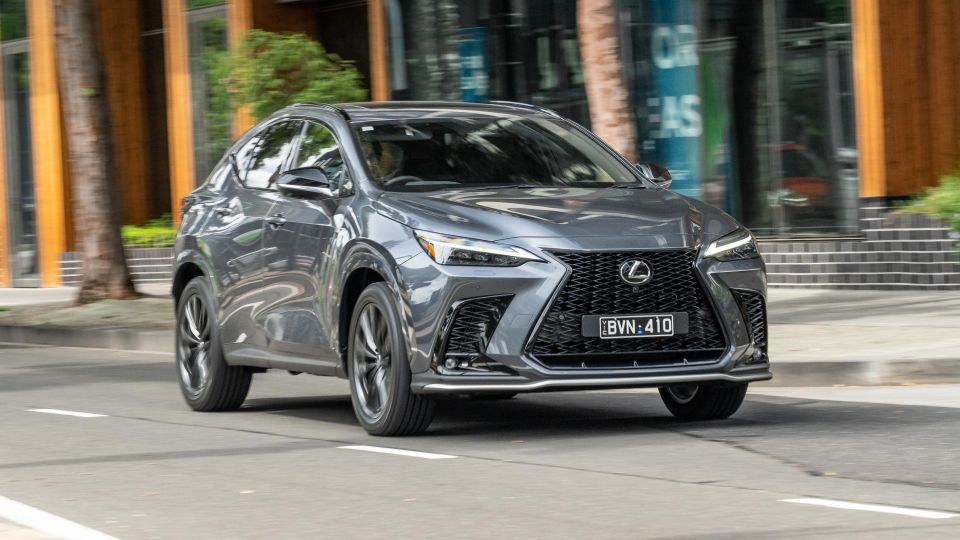


Quickly see how this car stacks up against its competition. Select any benchmark to see more details.
Where expert car reviews meet expert car buying – CarExpert gives you trusted advice, personalised service and real savings on your next new car.
Lexus has a long history of conventional hybrids in Australia, but it’s only now dipping its toe into the plug-in hybrid waters.
The NX450h+ is not just the first Lexus plug-in hybrid (PHEV) in Australia, it’s the first plug-in hybrid from either of Toyota’s brands.
It sits alongside the electric UX300e at the forefront of the brand’s electric charge, which started slowly but should rapidly gather pace over the coming years.
The NX450h+ has a couple of jobs. As the flagship of the new NX SUV range, it needs a modern interior with the technology to tackle the luxury mid-sized SUV establishment in a way its ageing predecessor couldn’t.
As a plug-in hybrid, the 450h also needs to offer more performance than the regular NX350h hybrid, along with enough electric range to get owners to work (and beyond) without troubling the internal-combustion engine.
For the most part, it delivers on all those promises.
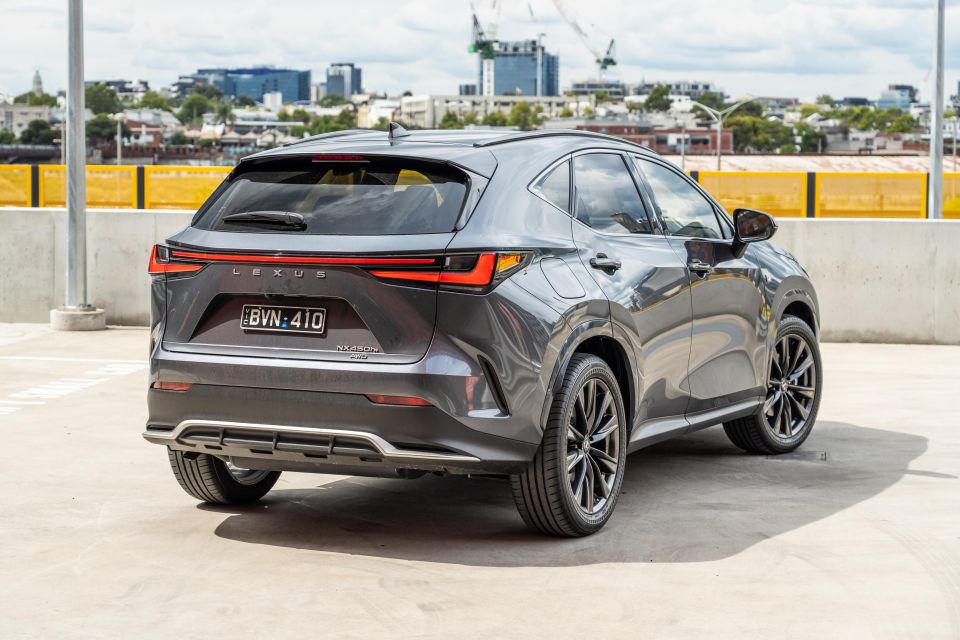
The NX450h+ is the most expensive member of the 2022 NX range, with a sticker price of $89,900 before on-road costs.
Unlike some plug-in hybrids, the NX isn’t priced in a different stratosphere to its purely petrol-powered siblings.
It’s just $6000 more expensive than a top-tier NX350h F Sport, and is around $10,000 pricier than plug-in hybrid powered versions of the (larger) Kia Sorento and the Peugeot 3008.
It undercuts the Mercedes-Benz GLC300e by $5000 and the BMW X3 xDrive 30e by $14,000, despite offering a longer (claimed) electric range than both.
A full price list for the new NX is in our price and spec story. Prices range from $60,800 before on-road costs for the base NX200 to $89,900 before on-roads for the NX450h+ on test here.
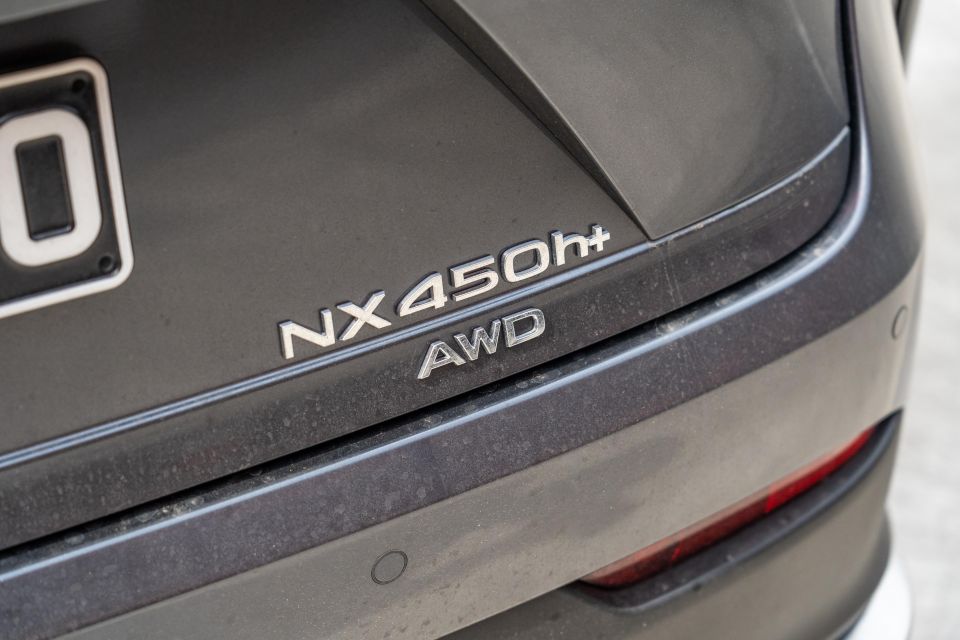
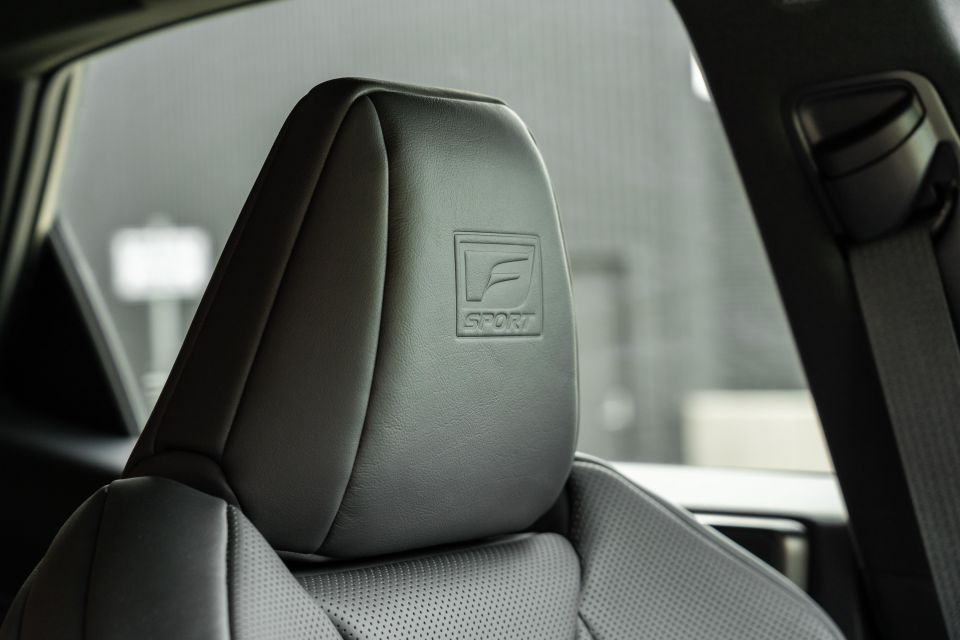
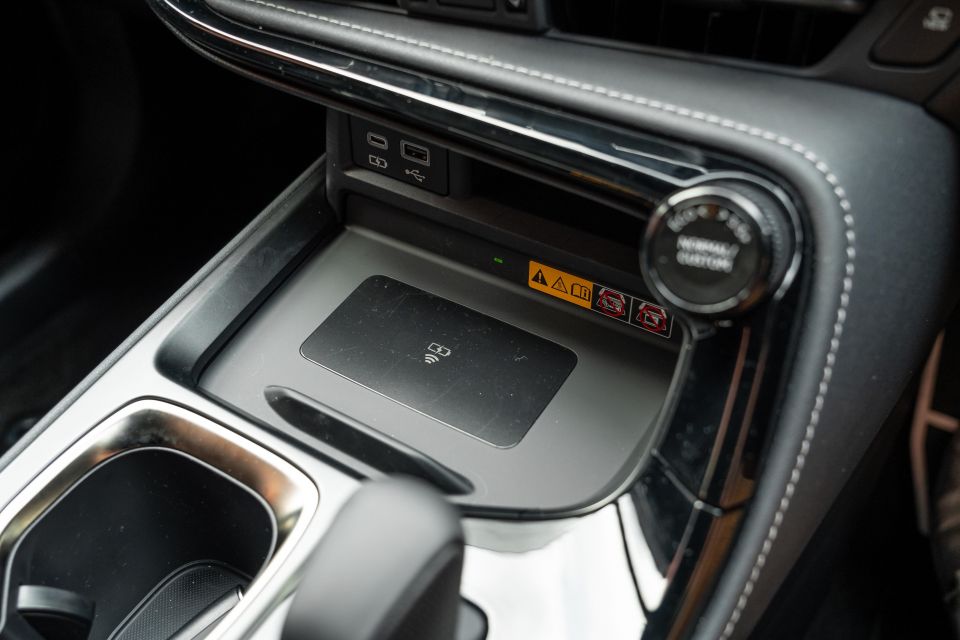
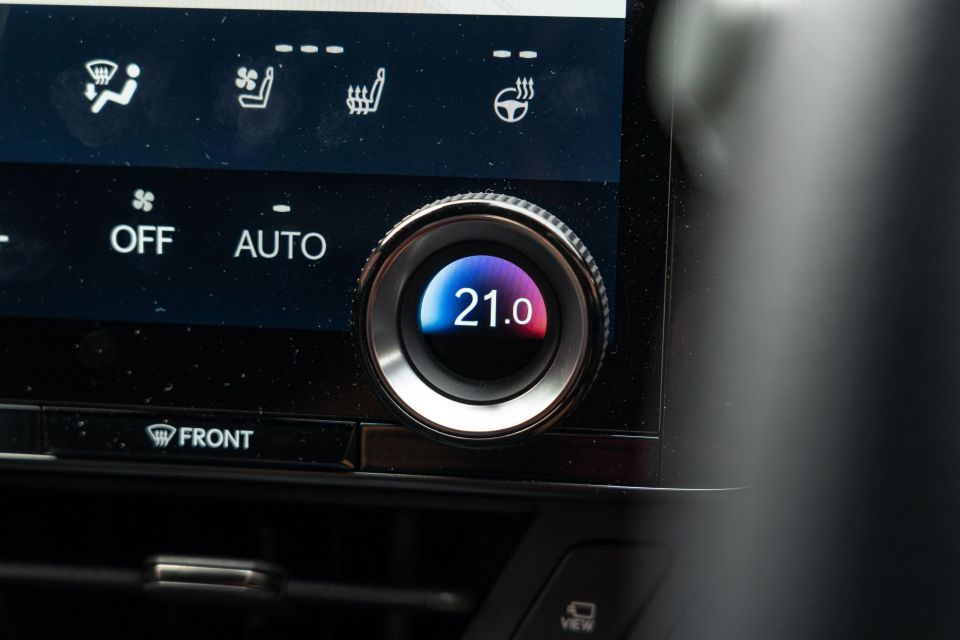
Buy your new car without the stress. It's fast, simple and completely free.

Great service from Travis and team, second time I have used this business would not hesitate to recommend them to anyone
Craig C.
Purchased a Ford Ranger in Sunshine Coast, QLD
CarExpert helped Craig save $7,224 on his Ford Ranger, now let us save you on your next new car.
Get your BEST priceThe sprawling NX range features a big spread of trim levels, most of which can be augmented by what Lexus calls Enhancement Packs.
Given it’s the range-topper, the NX450h+ comes in racy-looking F Sport guise and features some features from the Enhancement Packs as standard. There are no options on this model.
Standard equipment includes:
Although it’s close to fully loaded, you do miss out on some features from elsewhere in the range.
It misses out on the 17-speaker Mark Levinson sound system offered as part of an Enhancement Pack on other models, along with a bigger panoramic sunroof and semi-autonomous parking assist.
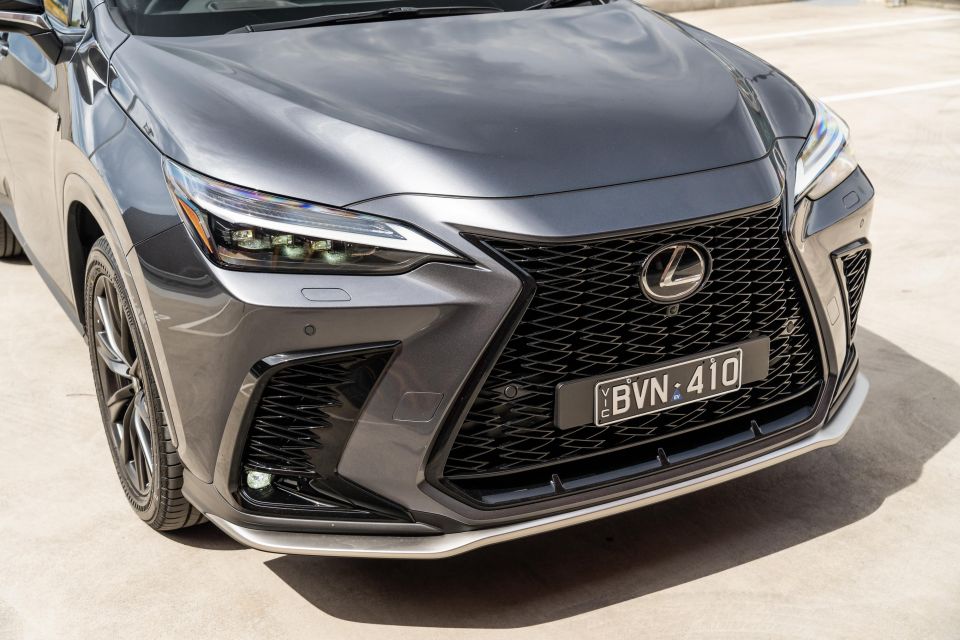
The Lexus NX earned a five-star rating in Euro NCAP testing days after our review went live. We’ve updated the below section accordingly, along with our scores.
The car earned 83 per cent for adult occupant protection, 87 per cent child occupant protection, 83 per cent for vulnerable road user protection, and 91 per cent for safety assist.
Standard safety equipment includes:
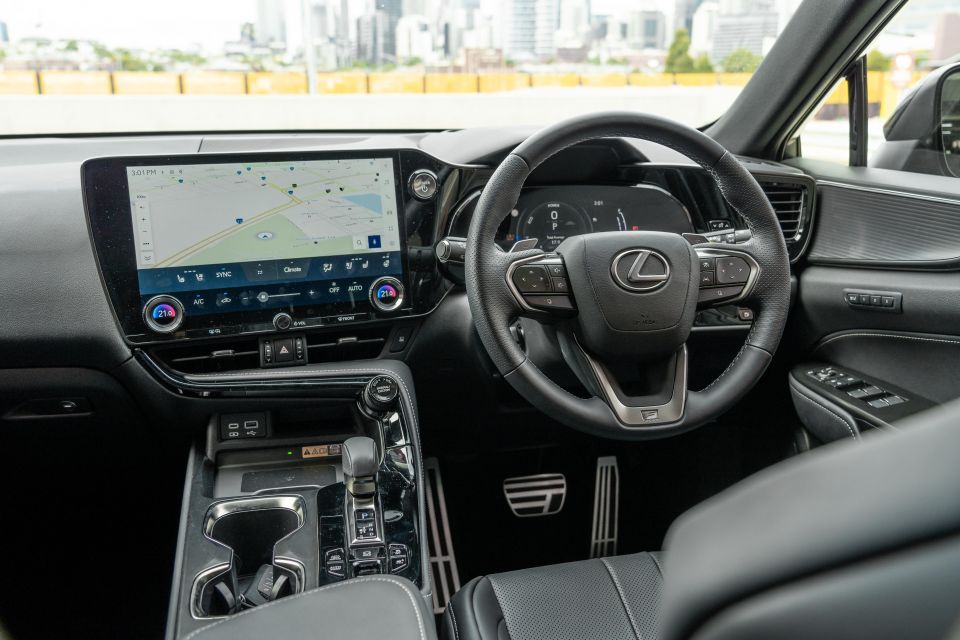
Wow, that’s better. Lexus has finally ditched the fiddly buttons and mousepads, and has joined its German rivals in the 21st century with a massive, high-resolution touchscreen. The interior in the new NX looks great, something that was hard to say about its predecessor.
The driving position is decent, with plenty of support from the beautifully-bolstered F Sport seats and a decent range of adjustment, but the sunroof eats into headroom, and the seat could slide further back to accomodate tall drivers.
Speaking of the sunroof, it’s hard to understand why the most expensive NX can’t be optioned with the full-sized panoramic unit from other models. It’d lift the ambience, especially in the case of our all-black tester.
The driver is faced with a digital instrument binnacle the mimics the circular dial from the LFA, albeit without the cool mechanical sliding ring that previously featured. It doesn’t exactly move the game forward, given the lack of mapping or much in the way of personalisation, but it’ll instantly make previous owners feel right at home.
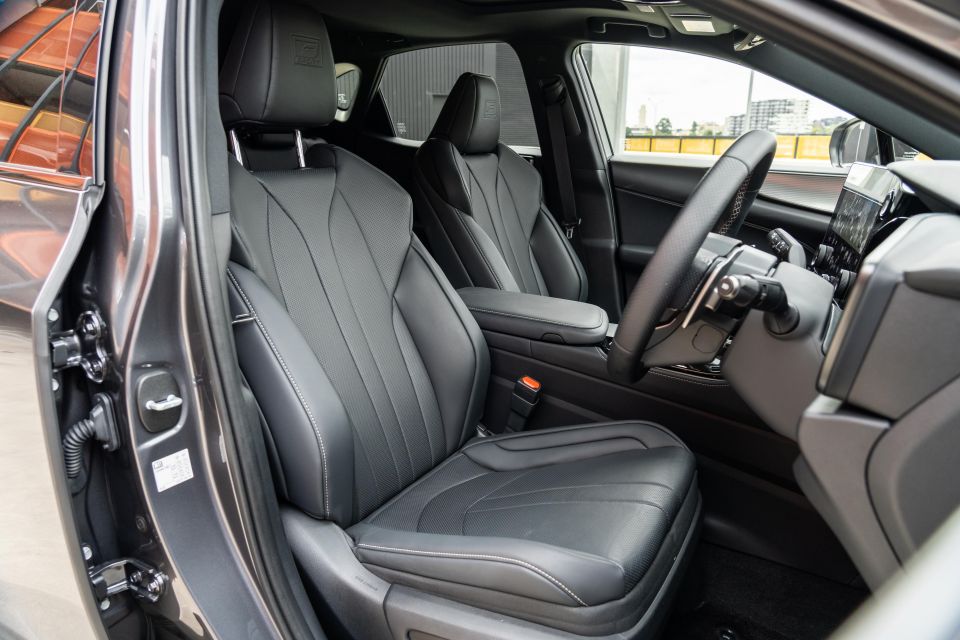
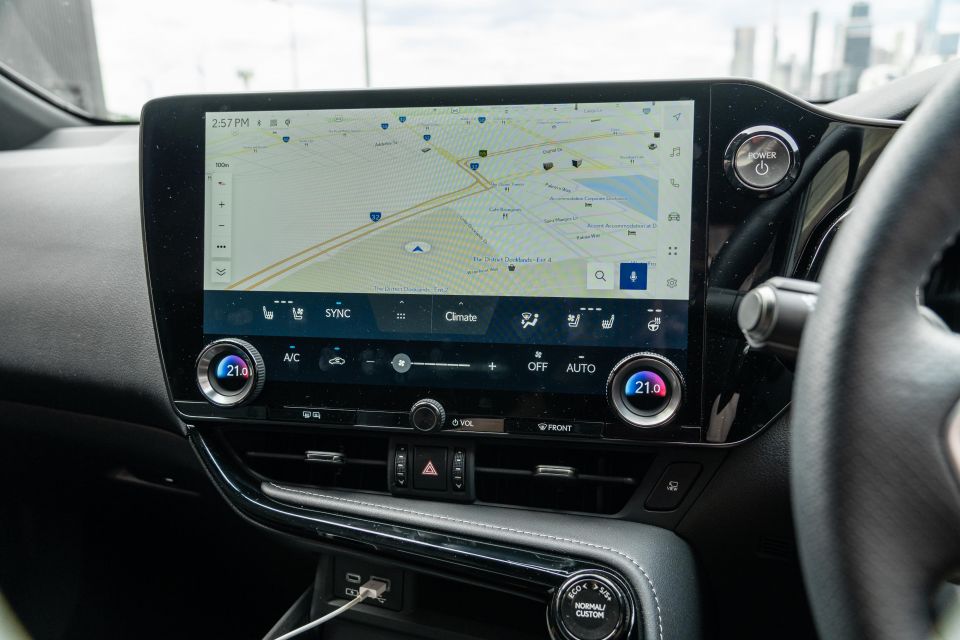
The arrow pads on the steering wheel – each of which controls two menus, toggled with a separate button – are too clever by half. You can’t adjust the HUD or dash readout when cruise is active, for example, and you need to check the head-up display to see which mode they’re in before actually pressing if it’s been a while between inputs.
As for the touchscreen? It’s miles better than the touchpad-based tech in most current Lexus cars, with crisp graphics and a logical menu structure. The loss of most physical buttons isn’t too keenly felt because there are still big shortcuts for your climate controls, and Hey Lexus voice prompts generally work well.
The cameras are clear and bright, and the Land Rover-style view that shows what’s happening beneath your car is handy.
There are a few quirks, though. If your phone has been connected to CarPlay and you want to use Bluetooth, you need to dive through the settings and reclassify that phone as a Bluetooth device (or vice-versa) – the car doesn’t work out how you want to pair and do it automatically like almost everything else on the market.
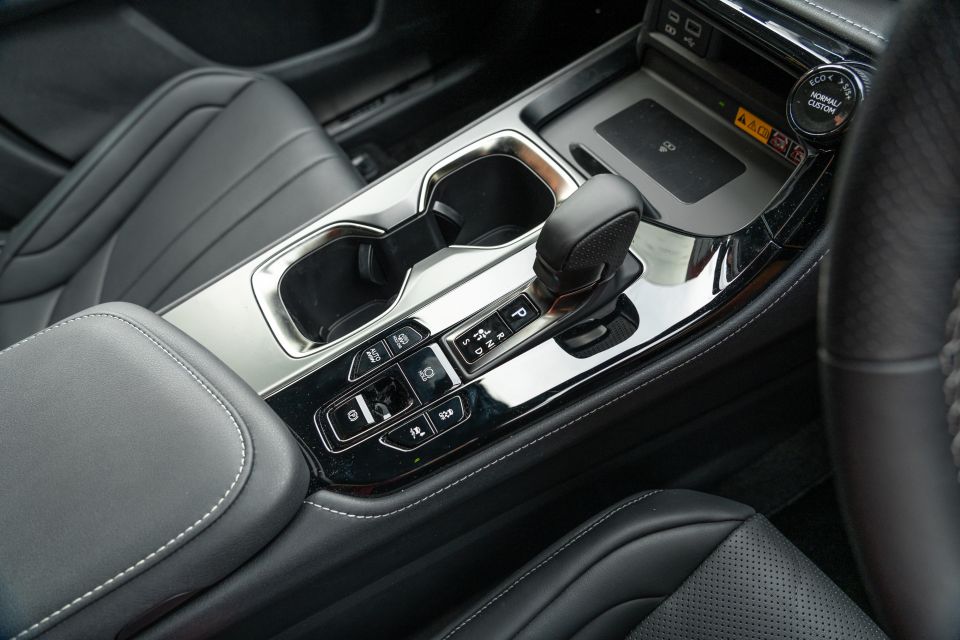

Given it’s a new system, it’s strange Lexus hasn’t gone to the trouble of including wireless CarPlay and Android Auto.
Don’t get us wrong, the new infotainment technology is more intelligent than anything else we’ve seen in a Toyota, but the Germans still offer a more intuitive experience.
Where Lexus traditionally shines is when it comes to quality, and the NX is no exception. The leather feels waxy, the buttons are all nicely damped, and the way the gear selector clunks into place is satisfying. It’s a nice place to spend time, and does nothing to undermine the brand’s reputation for rock-solid build quality.
There’s heaps of storage up front, from the bin beneath the sliding wireless phone cover to the deep centre console, and the choice of USB-A and USB-C ports is welcome.
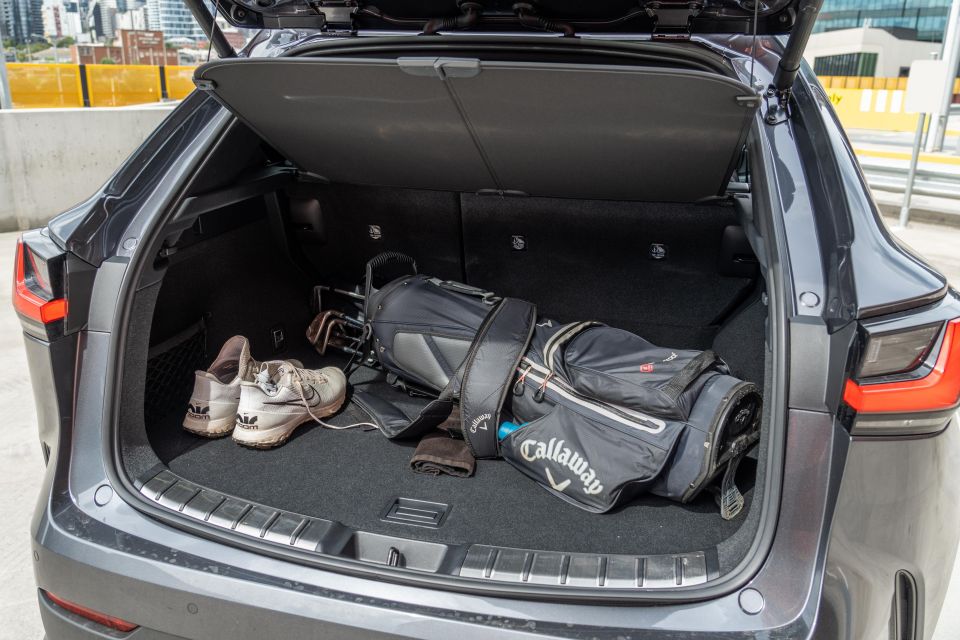
Rear seat space in the NX is par for the class, and represents an improvement over the last model. Legroom is decent behind tall adults, and there’s enough headroom to accomodate full-sized adults. Although it’s grown incrementally larger
A BMW X3 still has more space and feels airier thanks to its more upright windowline, but the NX isn’t all that far behind it anymore.
The dual USB-C ports mean kids will be able to keep their iPads juiced on long road trips, and as you’d expect there’s a fold-down central armrest and rear air vents.
Boot space is a claimed 520 litres with the rear seats in place, and 1411L with them folded flat. There’s no penalty for choosing the PHEV; the whole range has the same amount of storage.
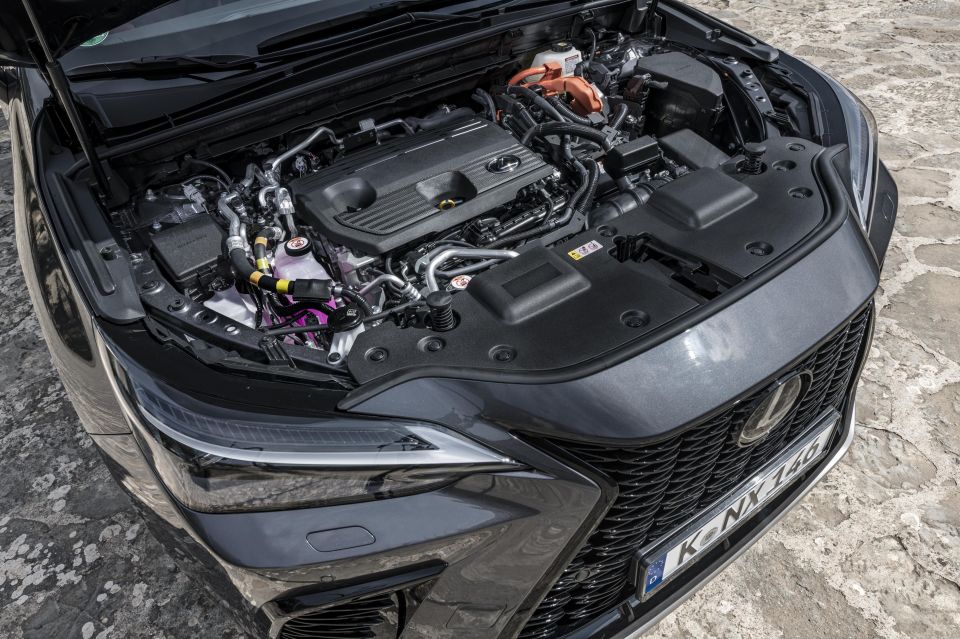
Power in the NX450h+ comes from a plug-in hybrid powertrain that combines a 2.5-litre four-cylinder petrol engine with two electric motors and a 18.1kWh lithium-ion battery.
Peak combined power is 227kW, and the 100km/h sprint takes a claimed 6.3 seconds. Lexus doesn’t quote a combined peak torque figure.
Claimed fuel economy is 1.3 litres per 100km, but as with all PHEVs your actual mileage will vary based on how much charge is in the lithium-ion battery.
With a full charge we consistently achieved between 65km and 70km of mostly-electric motoring, good for fuel use over this distance averaging between 0.0 and 0.2 litres per 100km according to the trip computer.
With an empty battery, however, that figure was a more conventional (for a hybrid) 5.7 litres per 100km, on a mixed driving loop.
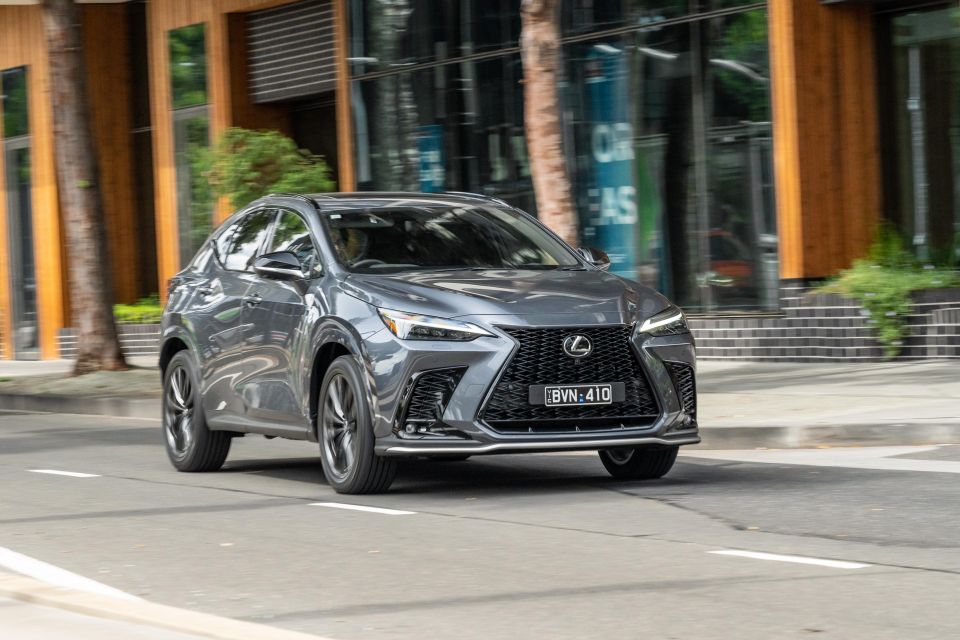
How the NX feels is dependent on how much battery charge you have. With a full battery, the car does an impressive electric vehicle impersonation. Save for the most aggressive throttle inputs, the petrol engine doesn’t kick in when the 18.1kWh lithium-ion battery has charge.
There’s decent punch off the mark in EV mode, and it’s delivered instantly when you put your foot down on the move. Flicking into Sport or Sport Plus primes the electric motors and petrol engine for maximum performance, and makes the NX feel faster than you’d expect of a 2050kg crossover from a standing start.
Anyone jumping into the NX PHEV after driving a pure electric vehicle will note the lack of regenerative braking, even in EV mode, but the smartly-calibrated brake pedal means it’s easy to stop smoothly as the car transitions between its motors and mechanical brakes.
The electric motor will reliably carry you up to around 80km/h before the petrol engine needs to fire more regularly, and it’s able to keep the car rolling at a constant 100km/h cruise provided the road isn’t too hilly. For the most part, the NX just behaves like an electric vehicle when it’s charged.
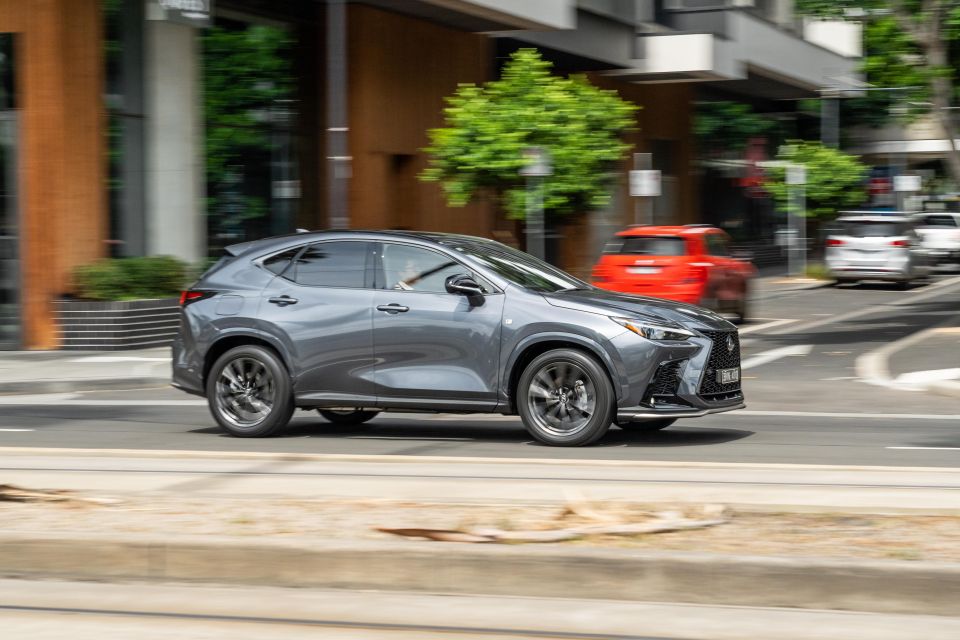
When the battery goes flat, the NX450h+ behaves like a regular Toyota hybrid. The electric motors get you rolling, but the petrol engine cuts in at around 20km/h – or when you put your foot down hard off the mark – to lend it a hand.
It generally fires smoothly, and there’s no vibrations through the steering wheel even on a cold start, but it’s a bit louder than we expected. It doesn’t make a particularly enjoyable noise, and the CVT means asking for peak power makes the revs flare.
It’s definitely better suppressed than the engine in a regular RAV4 hybrid, but it doesn’t move the game forward in the way maybe you’d expect of a ground-up new car from a brand known for its refinement. Maybe we’re being too harsh.
Don’t be fooled by the F Sport badge; this isn’t a sporty crossover. Nor should it be, given Lexus owners tend to favour comfort and refinement over outright handling prowess.
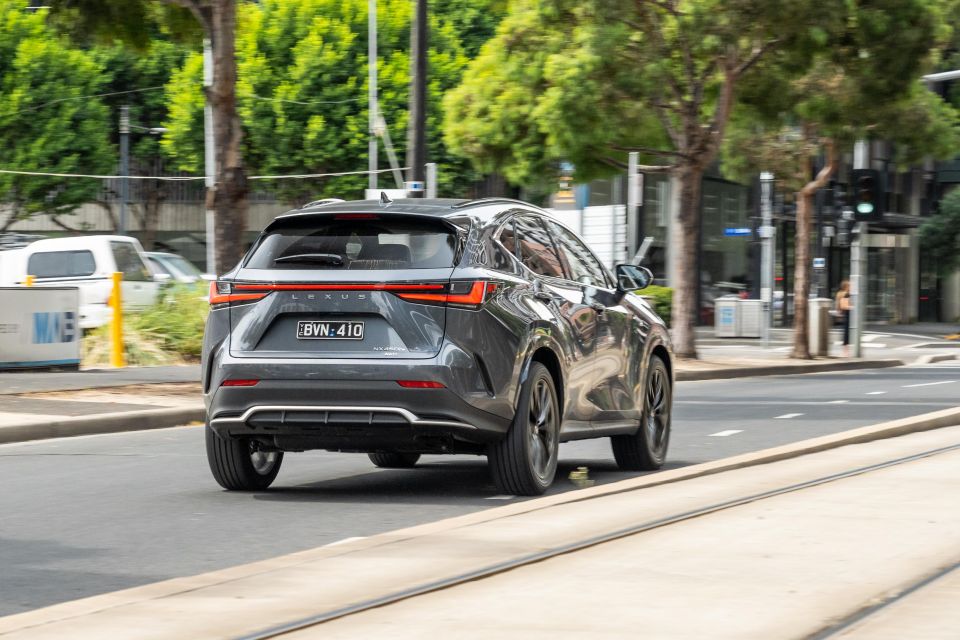
The chubby steering wheel is hooked up to a light, fluid steering setup that makes the NX easy to pilot in town, and the suspension has been set up for compliance instead of rock-solid body control. It’s not busy or unyielding like some cars on run-flat tyres, although some sharper bumps do make their presence felt behind the wheel.
It doesn’t feel harsh or uncomfortable, it just feels… heavy. That’s a common complaint with plug-in hybrids – we noted the same thing in the Peugeot 3008 PHEV – given they need to carry around electric motors, a lithium-ion battery, and a petrol engine.
The NX450h+ is 180kg heavier than an NX350h all-wheel drive, and it shows sometimes. With that said, it handles its mass better than other plug-ins we’ve driven on the highway.
Big crests and dips are dealt with in one swift movement, and performance is pretty impressive at the legal limit in Australia. With both electric motors and the petrol engine working in tandem, you’ll be able to overtake without breaking too much of a sweat.
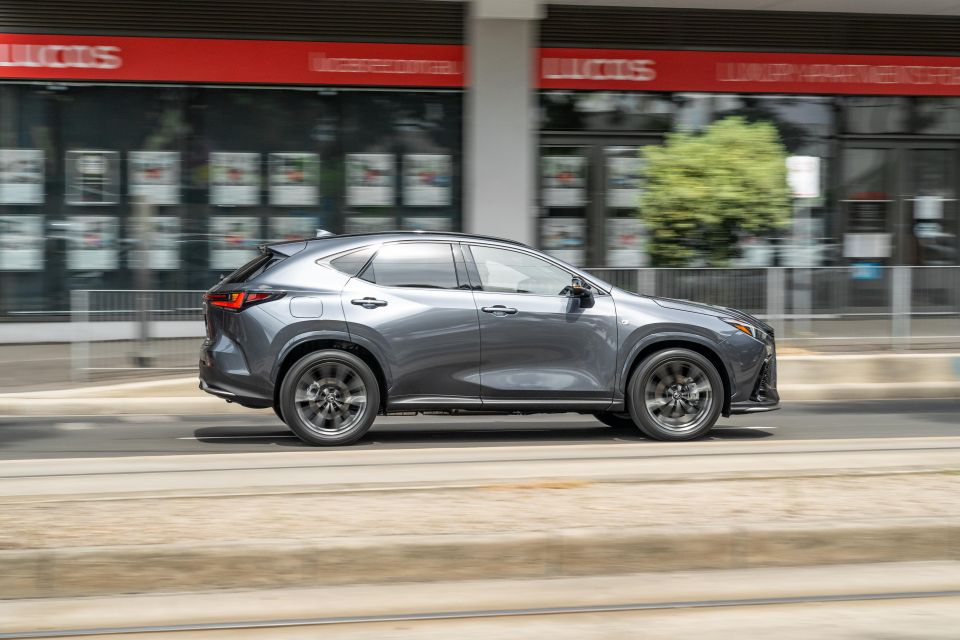
Lexus has improved significantly on the cumbersome ride in the previous NX. Where that car felt floaty and a bit cumbersome, the new model is more controlled. It’s benefitted from the move to the TNGA underpinnings from the wider Toyota and Lexus range.
With the smooth, smart adaptive cruise control maintaining a gap to the car in front and the lane-keep assist nudging you back between the white lines, this is an easy car to drive long distances.
It is a bit noisier than we expected, though. Those run-flat tyres make their presence known on anything other than perfect surfaces, kicking up more white noise than we’ve come to expect from Lexus on the open road.
It’s nothing that can’t be drowned out by a few extra clicks on the excellent sound system, but it’s out of keeping with the ultra quiet, refined niche Lexus has carved out for itself.
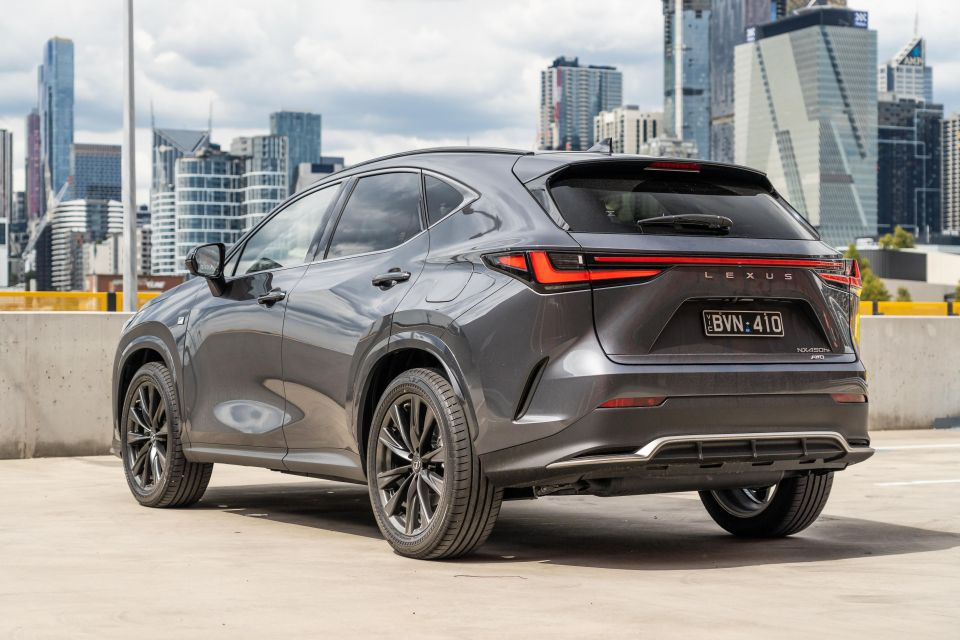
Where expert car reviews meet expert car buying – CarExpert gives you trusted advice, personalised service and real savings on your next new car.
The Lexus NX is backed by a five-year, unlimited-kilometre warranty. The battery is backed by a 10-year, unlimited-kilometre warranty, too.
Capped-price servicing for three years or 45,000km will cost a total of $1485. The NX can be collected from your home work, with a complimentary loan vehicle delivered door-to-door.
Lexus will install a home wall charger with the plug-in hybrid NX, and owners get access to loan cars from dealers or airports as part of the Encore Platinum program.
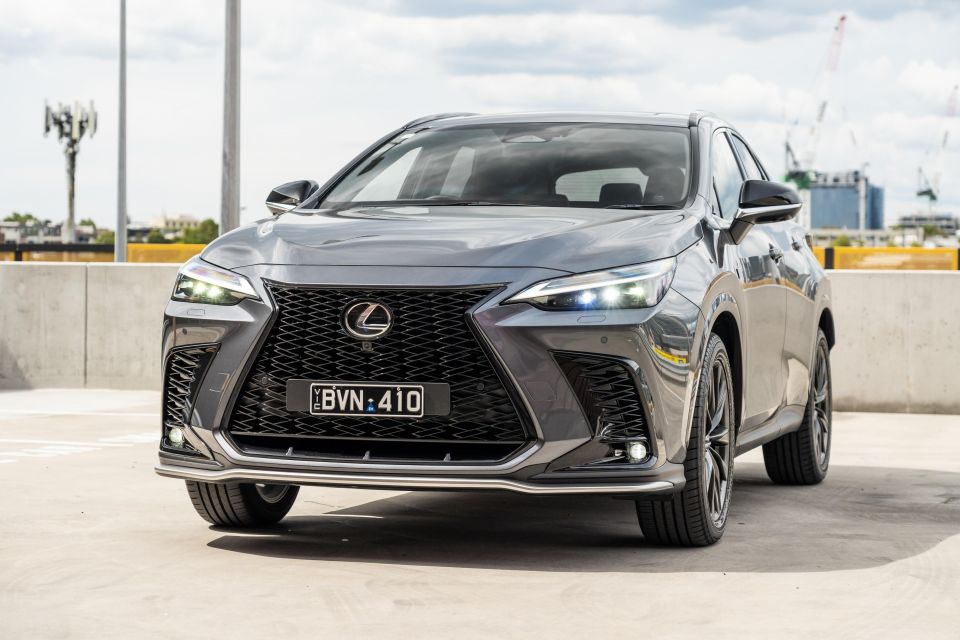
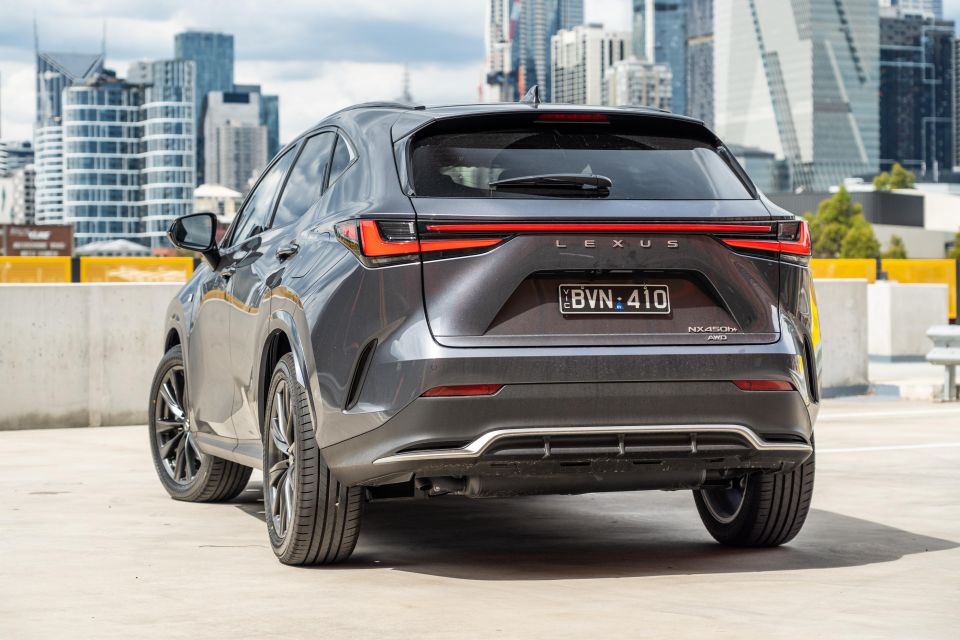
Buy your new car without the stress. It's fast, simple and completely free.

Great service from Travis and team, second time I have used this business would not hesitate to recommend them to anyone
Craig C.
Purchased a Ford Ranger in Sunshine Coast, QLD
CarExpert helped Craig save $7,224 on his Ford Ranger, now let us save you on your next new car.
Get your BEST priceThe new Lexus NX represents a leap forward compared to its predecessor. It’s better to look at on the outside, far more modern on the inside, and is more capable on the open road.
Lexus has gone through what was wrong with the last car and corrected essentially all of it, mostly without undermining the relaxed, plush character that made it so popular. That’s to be applauded.
The plug-in hybrid is priced well relative to the rest of the range, which isn’t always the case, and offers more electric range than its European rivals.
It does a good electric vehicle impersonation with a full charge, although refinement does take a hit when the lithium-ion batteries are out of charge.
As always, you really need to do your research before stumping for the plug-in hybrid. You need to be able to charge at home, and need to make sure you’re not planning on spending too much time on the highway, where a diesel or even a conventional hybrid might be more efficient.
If that sounds like you, the NX450h+ should be near the top of your shopping list.
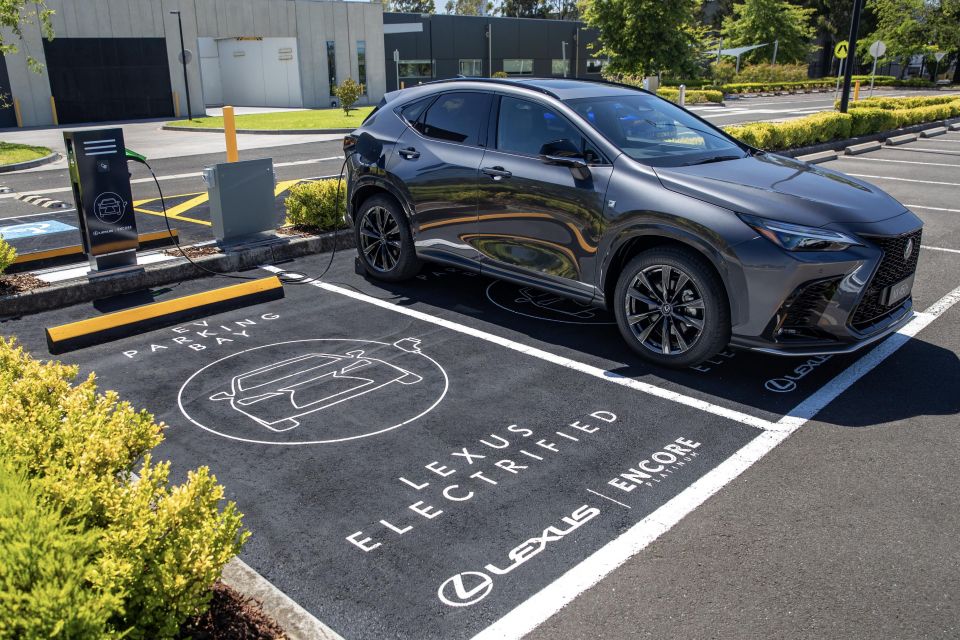
MORE: Everything Lexus NX
Where expert car reviews meet expert car buying – CarExpert gives you trusted advice, personalised service and real savings on your next new car.
Scott Collie is an automotive journalist based in Melbourne, Australia. Scott studied journalism at RMIT University and, after a lifelong obsession with everything automotive, started covering the car industry shortly afterwards. He has a passion for travel, and is an avid Melbourne Demons supporter.


Damion Smy
1 Day Ago
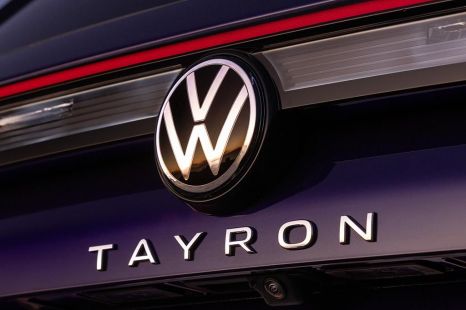

Damion Smy
1 Day Ago
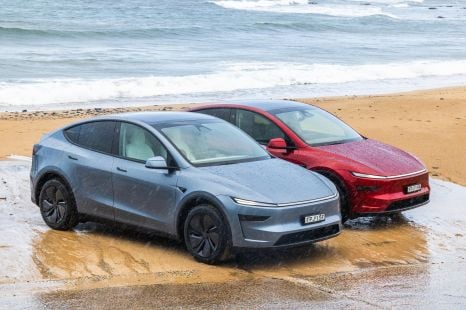

William Stopford
6 Days Ago


Damion Smy
7 Days Ago
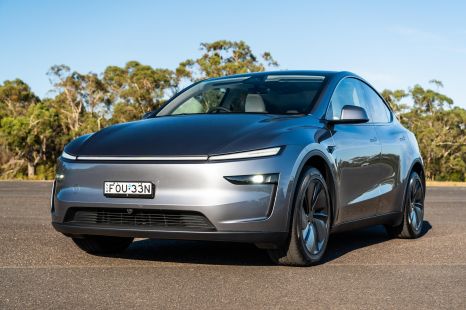

CarExpert.com.au
7 Days Ago


Damion Smy
8 Days Ago